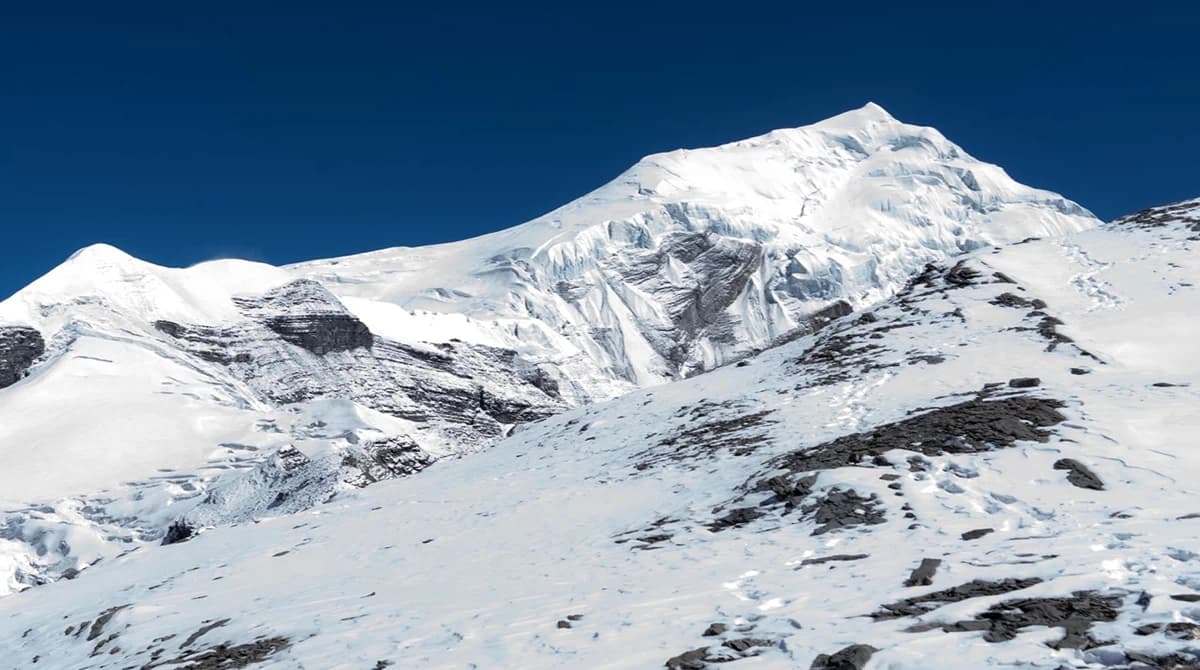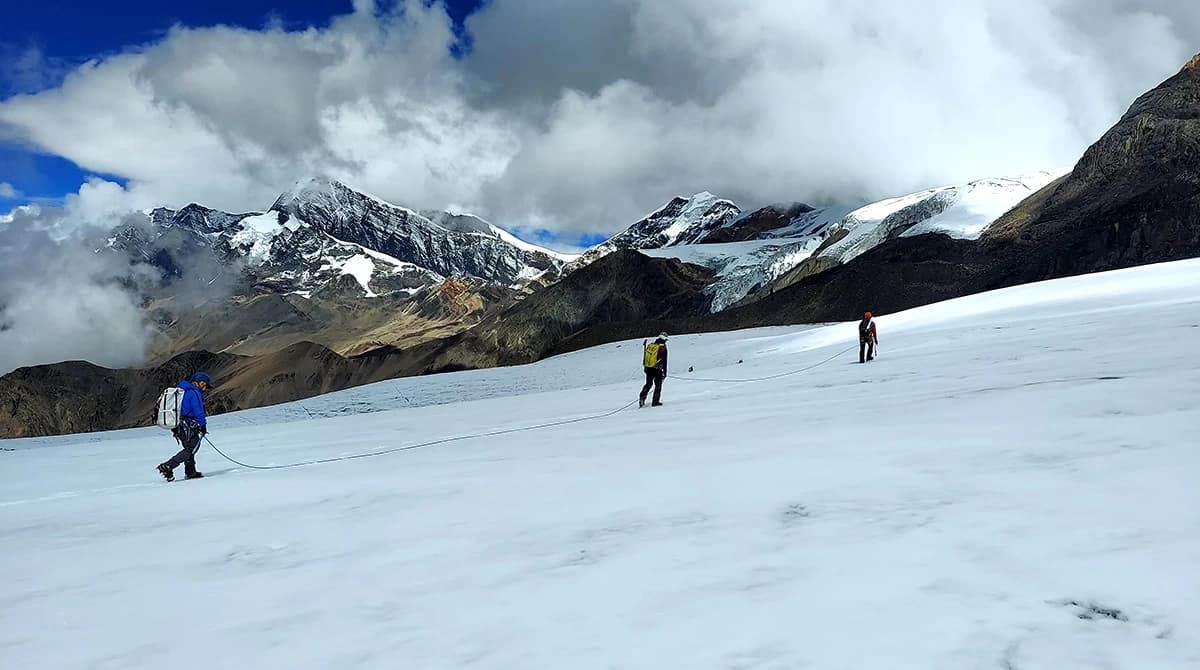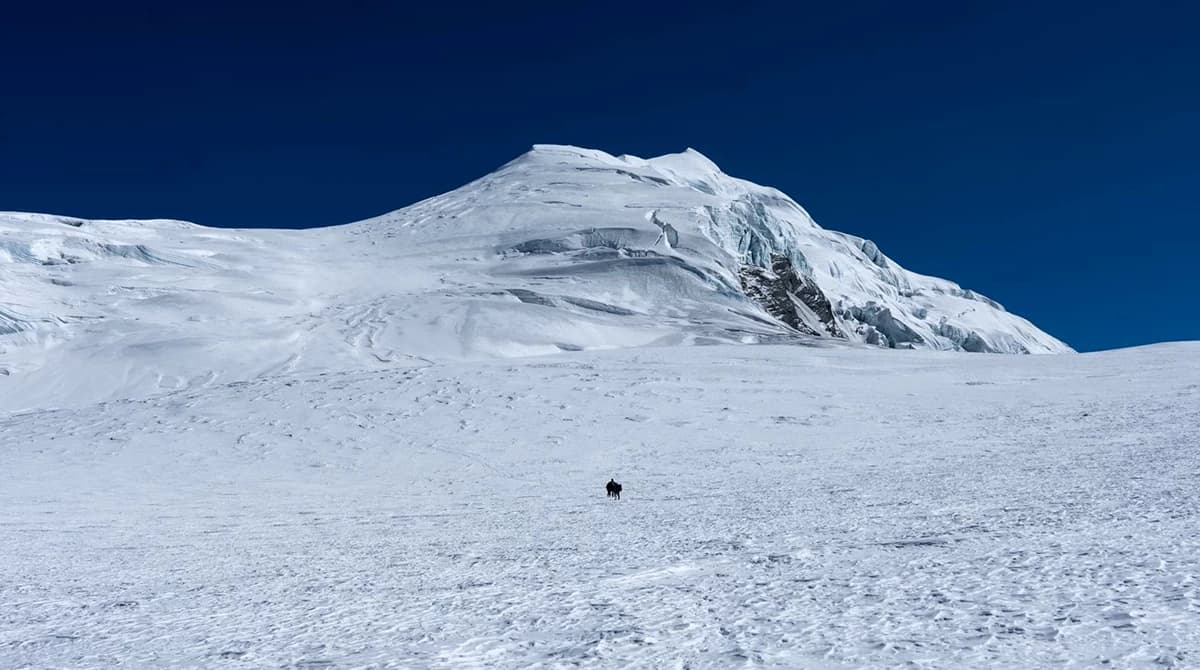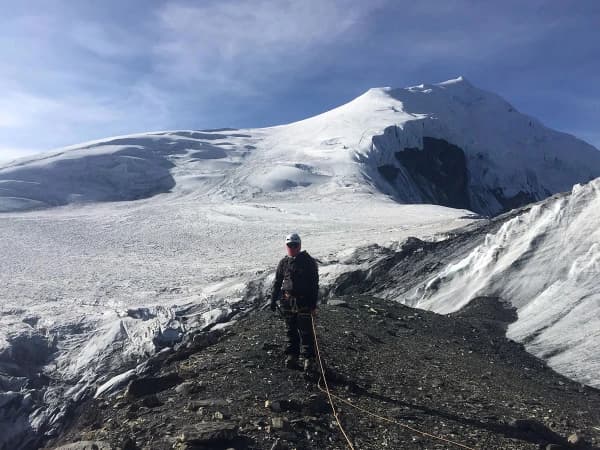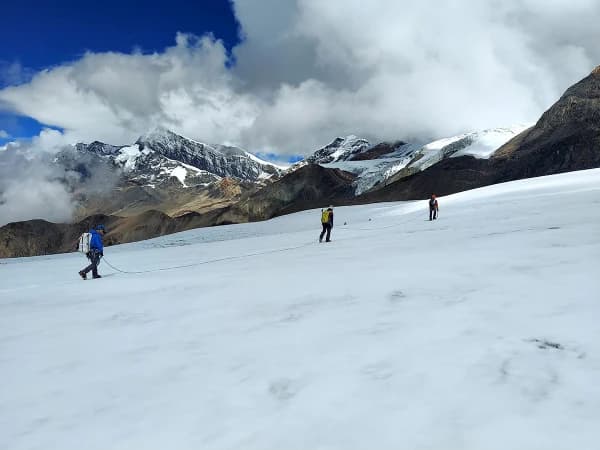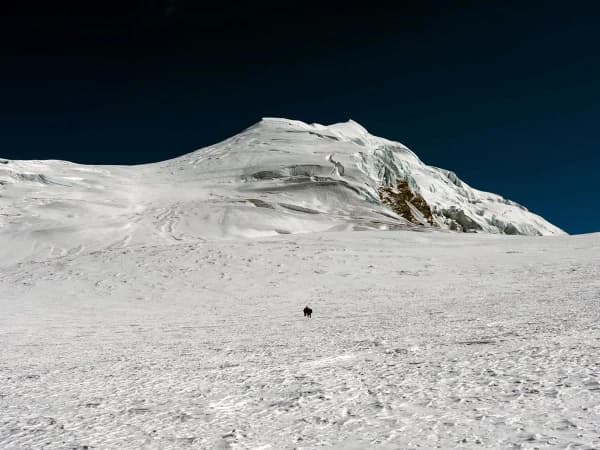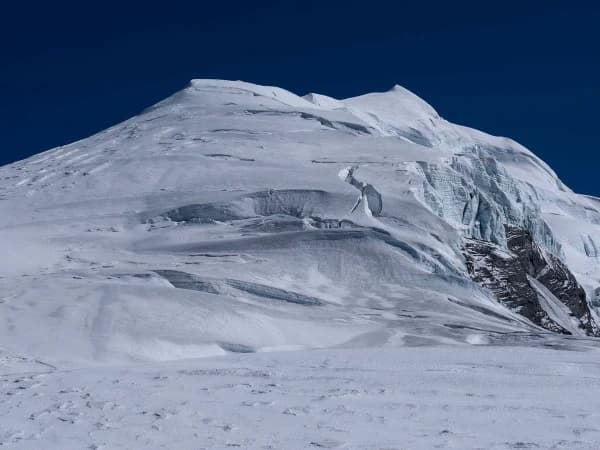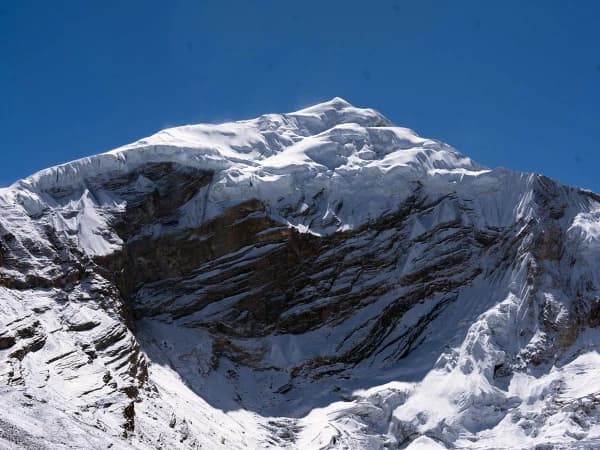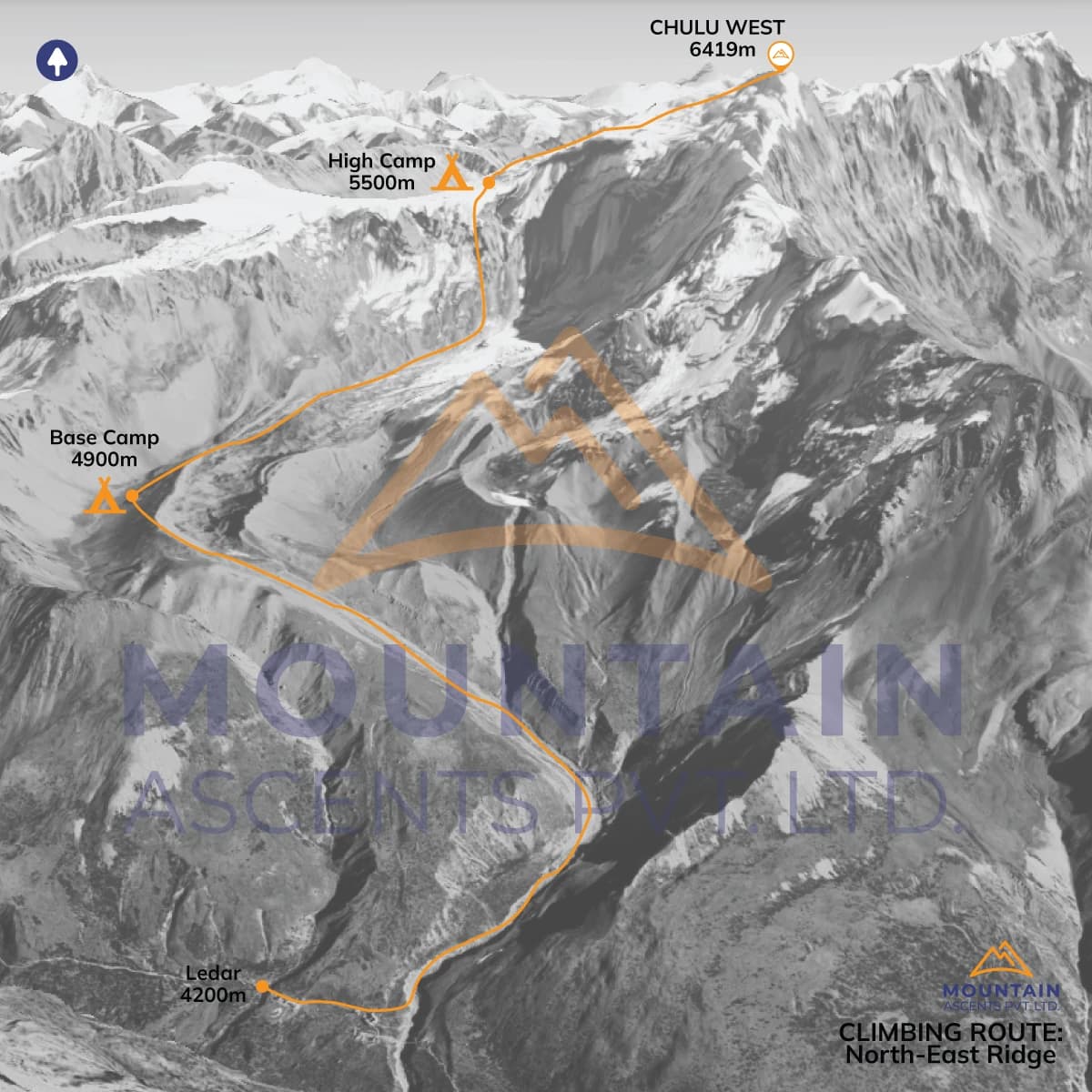The Chulu West Peak Climbing is one of the most adventurous Himalayan trekking and climbing journeys in the Annapurna region of Nepal. Boarded by two of the shimmering glacial rivers: Marsyangdi Khola in the south and Mesokanta-La, the alpine rambling to conquer Chulu west (6,419 m) is through the world’s deepest gorge, Kali Gandaki, traversing the classic Annapurna Circuit Trail.
Beginning from the capital city of Nepal, Kathmandu, which is also rich in UNESCO World Heritage listing seven sites of such kinds, the trekking and climbing tour episodes are as follows: Starting from several green forests and through terrains of alpine meadows and a series of Himalayan giants such as Annapurna, Dhaulagiri, Manaslu, and much more. En route, you will be stunned by the rich Himalayan culture and heritage showcasing strong ties to Tibetan Buddhism, which believes in kindness, love, compassion, peace, and harmony.
En route to Chulu West, a part of Manang Himal, which itself is an integral part of the Damodar Himal, you will get to relish the unique blend of technical climbing, stunning scenery, cultural immersion, and spiritual awakening as you make way through traditional houses, Green Valleys, Chulu Peak and its base camp and highs camps, Muktinath, and Thorong La Pass, major highlights that the Annapurna Trekking region has to offer.
Therefore, Chulu West summit is a once-in-a-lifetime opportunity to embrace the true beauty of the Annapurna conservation area, its Himalayas, and its picturesque nature and connect to the Himalayan culture before you test yourself in the arduous mixed terrain, glaciers, and rock faces towards the peak itself, granting a never-like sense of achievement and adventure.
Trip Highlights
- UNESCO World Heritage Sightseeing and Preparation Day in the Kathmandu Valley.
- Exciting drive to the Besisahar and Chame, viewing the rural life, serene Himalayan surroundings, and untouched countryside.
- Embark on one of the most popular Nepalese Himalayan routes, the Annapurna Circuit, and the climbing journey to Chulu West.
- Get to experience the genuine hospitality of the Himalayan locals in the tea house and stargazing camping in one package.
- An insider insight into the day-to-day life, culture, and traditions of locals from the Himalayas in remote parts of the country resembling that in Tibet.
- Mark your victory at Chulu West Base Camp, High Camps, Chulu West Peak, and the adrenaline-rushing Thorong La Pass as well.
- Delightful trek along the roaring Kali Gandaki River, dense forests, traditional villages, and diverse landscapes with never-ending sights of the Himalayan panorama such as Dhaulagiri (8,167 m), Annapurna (8,091 m), Nilgiri North, and the world's highest lake, Tilicho Lake, particularly from the Chulu West itself.
- Visit one of the most sacred Hindu shrines, Muktinath, and many more.
What makes the Chulu West Peak Climbing special?
There are a lot of things that come together to make the Chulu West an extremely rewarding Himalayan voyage in Nepal. Be it exploring Nepal’s Annapurna region's rich biodiversity, stunning scenery, or the Tibetan Buddhist culture, you can always expect raw Himalayan wilderness involving extraordinary ascents and descents with profound self-growth, finding, and new to experience and look up to.
It will be amazing to trace the classic Annapurna Circuit Trail featuring lush valleys, alpine rivers, ancient monasteries, and other landmarks further extending up to Chulu West Peak with slightly increased technicality, leave your footprint on one high mountain pass of Nepal, Thorong La, and take blessing at the tranquil religious sites of Muktinath as discussed in brief below:
Fascinating Himalayan views from various perspectives
While the Chulu West on a high ridge offers incredible unparalleled panoramic views of several snow-capped Himalayan peaks of both the Annapurna and Manang regions, including Annapurna I, Dhaulagiri, Manaslu, and Gangapurna, the early peak climbing through the Manang Valley winding through the Marsyangdi River is also no lesser.
During the initial legs days, you will be able to catch stunning glimpses of the Annapurna ranges, including the tenth highest mountain in the world, Annapurna I (8,091 m), while the Chulu Base Camp is imposed with the dramatic sights of Chulu East, Chulu Central, and Pisang Peak.
Once you descend from the top of Chulu West and approach Thorong La High Pass, the route is mostly dominated by the almighty gaze of the Dhaulagiri Range and Gangapurna, along with that of the Annapurna Range to the south and the Mustang region to the north. That is why the Chulu West Peak Climbing is a truly immersive Himalayan experience, offering awe-inspiring and unforgettable Himalayan panoramas right from the starting point.
Seamless combined experience of both trekking and climbing
Unlike many of the peak expeditions, Chulu West offers a unique combination of trekking through one of the most popular trekking routes globally, the Annapurna Circuit. For several days you will hike through the dense forests, terraced fields, and scenic villages inhabited by various ethnic communities of Nepal, allowing gradual acclimatization.
In general, the locals are the Gurungs and Thakalis, as you notice the transition of landscape from green valleys to rugged alpine meadows and barren land. The contrasting beauty is a visual treat to the eyes, keeping you full of spirit for the final ascent to the Chulu West in a single journey catering to the interests of both the mountaineers and trekkers seeking an unforgettable Himalayan voyage.
Enriching cultural immersion and pilgrimages to Muktinath Temple
As you know, much to the delight of adventure lovers, the expedition to Chulu West fuses two adventurous activities in one, both trekking and climbing. During the trek days, trekkers, expeditors, and visitors can get tea houses opened and managed by the Himalayan locals predominated by Magars, Gurungs, Thakalis, and Tibtean-influenced communities.
These Himalayan locals boast their distinctive ways of life, culture, traditions, cultural attire, architecture, festivals, and celebrations that have been preserved for centuries. Along the way, you will have ample opportunities to interact with locals, explore several Buddhist monasteries, and embrace the unique fusion of Tibetan Buddhism and Hinduism thriving in the region.
One such monument to witness the admirable coexistence of two of the largest religions in the world is a visit to Muktinath Temple, revered by both Hindus and Buddhists. Nestled at an elevation of 3,710 m/12,172 ft above sea level, Hindus believe Muktinath to be one of the 108 Divya Desams. While Buddhists treasure it as the meditation spot of Guru Rinpoche (Padmasambhava) during his journey to Tibet.
The temple is famous for its 108 water spouts and the eternal flame. A bath here is believed to wash away human sins and purify the soul. A visit to Muktinath during the Chulu West Expedition adds a spiritual dimension, enriching the cultural experience with a sense of pilgrimage and devotion.
Off the beaten summit experience to Chulu West
Chulu West is less frequented than some of the more popular trekking peaks in the Everest Trekking region, such as Island, Cholatse, Baruntse, and Mera. It offers a more remote and serene experience away from tourist influx.
The area is relatively untouched by massive crowds of trekkers, climbers, and adventurers, allowing for a more personal and immersive experience with a sense of solitude and exclusivity with nature and culture that may have been long lost from some of the more trafficked Himalayan areas.
Therefore, the Chulu West Expedition is one of the best stepping stones for 7,000m and 8,000m peaks that helps climbers, mountaineers, and trekkers to build confidence in the technically demanding sections as well, much needed for conquering some of the most adventurous and technical summits, including the top of the world, Mt. Everest (8,848m), and the eighth highest mountain in the world, Manaslu.
Thrilling endeavour to Chulu Base Camp, High Campes, Chulu West, and Thorong La Pass
The Chulu West Expedition is an adventurer's paradise for a reason. The lone journey for the summit push includes embarking on the Annapurna circuit and its high pass, Thorong La, after an adrenaline-rushing climb to Chulu Base Camp, High Camps, and the Chulu West itself.
Located at an elevation of 4,900 m above sea level, reaching Chulu Base Camp is a significant achievement in itself. The trail ascends gradually from the Annapurna Circuit, characterized by lush valleys, terraced farms, and typical mountain villages shifting swiftly to alpine meadows with only sparse vegetation in proximity to the base camp.
The base camp is a starting point of the climbing journey that proceeds through high camp at 5,400 m and involves more steeper and rugged navigation, including mountains and snow-covered paths, while the final climb to Chulu West involves making way through glaciers, icy ridges, and snow slopes at the peak of 6,419 m.
These sections are a haven for true mountaineers who love challenging themselves with the use of crampons, ice axes, ropes, and harnesses. However, the journey does not end here; it rejoins the Annapurna Circuit and moves forth to the infamous Thorong La Pass at 5,416 m above sea level.
There is a high risk of acute mountain sickness (AMS) or altitude sickness, adding much to the challenges of fickle Himalayan weather, steepness, and crevasses requiring solid pace and high altitude climbing skills along with a good amount of physical fitness, making it to the base camps, high camps, Chulu West Peak, and Thorong La Pass grants you an immeasurable sense of accomplishment and astonishing Himalaya vistas like never seen before as mentioned above.
Why 17-day itinerary is the best route for the Chulu West Peak Climbing?
For an immensely adventurous journey to the Chulu West that involves navigation through particularly strenuous high altitudes such as Chulu Base Camp and High Camps, including descending journeys through the Thorong La Pass, acclimatization becomes a key to successful ascents.
Therefore, the 17-day itinerary that begins right after you arrive in Kathmandu, Nepal, progressing through the Annapurna Circuit Trail, passing by notable villages like Manang and ascending through the higher altitudes, along with a visit to Muktinath Temple, is the best route, offering an interesting balance between acclimatization, technical mountaineering, seamless trekking, and full exploration without any rush.
Further, the 17-day itinerary also provides flexibility for unpredictable Himalayan weather with a summit window including buffer days for the summit in case the weather gets bad, raising the success rate. At Mountain Ascents, you can also get customized as per your needs, preferences, time constraints, and budget plans. Contact us now for an extraordinary, tailored itinerary best suited for you!
17 Days Chulu West Peak Climbing Cost for 2025/2026
The Chulu West Peak Climbing Package price can cost you anywhere from USD 3,500 to USD 4,500 and more based on the type of service you have chosen for yourself. The most affordable pricing is approximately USD 3,500; the standard one can go up to USD 4,500, and the premium gets costlier.
Usually, it is determined by the number of people in your group, the specific service included, and the providers. Mountain Ascents nonetheless ensures the best out of the best services, whether you purchase the peak climbing package to Chulu West with family, a private group, or a larger number of friends. Stay in touch for a comprehensive experience with valued costing!
